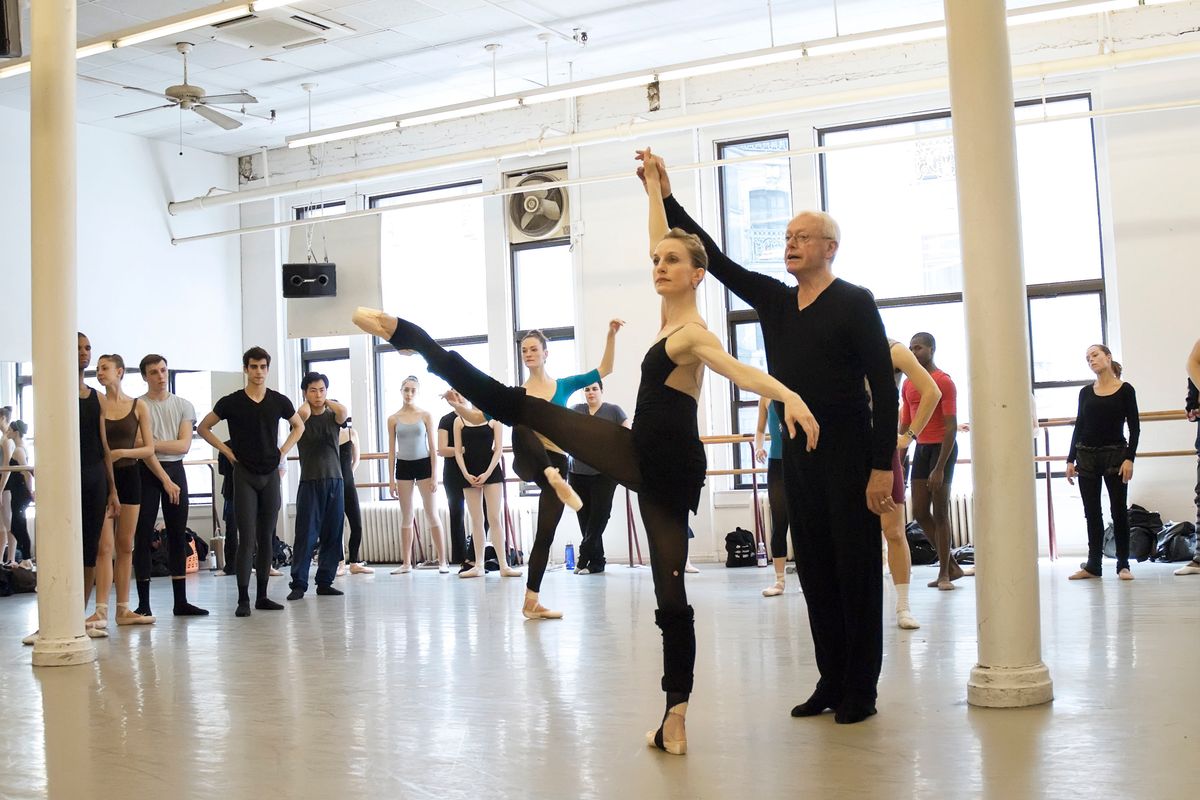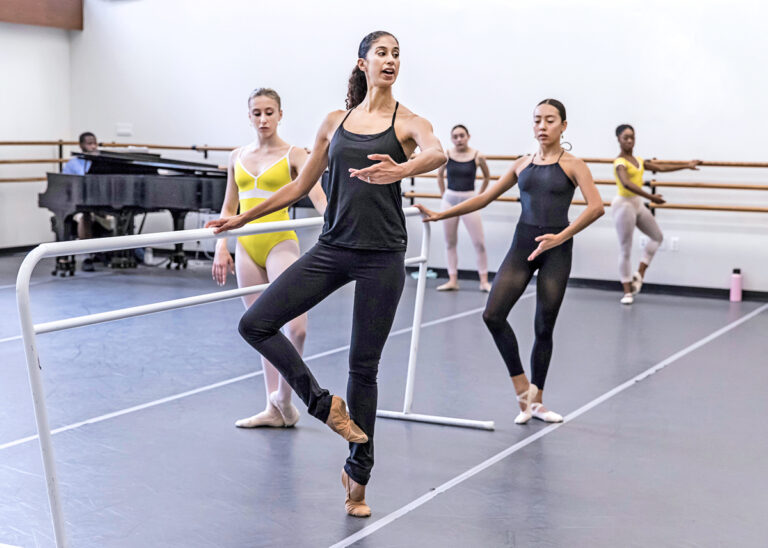
One of today’s leading ballet masters, German-born Wilhelm Burmann exerts a magnetic attraction on the professional students he teaches five days a week at Steps on Broadway in New York City. “Taking Willie’s class” has become a tradition for many top dancers of both New York–based companies and those simply passing through town.
Standing ramrod straight at age 69, Burmann embodies the authority and skills he acquired during an extensive global career. He was a corps member of the Pennsylvania Ballet and New York City Ballet, a Frankfurt Ballet principal dancer, Stuttgart and Geneva company principal and ballet master, and ballet master for The Washington Ballet and Le Ballet du Nord, among others. After he retired from dancing in 1977, Burmann took up guest teaching and is still in great demand at prestigious American and European companies and schools: This year he will teach in Florence and Milan, Italy.
Dance Teacher: Your resumé is impressive for someone who came to ballet so late. How were you first introduced to dance?
Wilhelm Burmann: I did not see my first ballet until I was 16. Some friends of mine who were “supers” [extras] at the opera house in Oberhausen asked me to join them onstage. I cannot remember what opera was performed that night, but its ballet overwhelmed me—I immediately knew I had to be a dancer. [Even the fact that] I was so poor I had to wear a sweater upside down, with my legs through the sleeves, as tights did not stop me. I took my first class in Essen, and jobs started coming my way within months.
DT: You must have been a swift learner or just naturally talented.
WB: No. There was a shortage of young males in Germany during the 1950s [due to the war], and I was good-looking. I took all the ballet classes I could and went everywhere with my partner, Alfonso Cata—from Köln to Frankfurt to Stuttgart—and gradually improved. When you begin taking class as a latecomer, you feel a sense of urgency that drives you, unlike a child first beginning class. It was a positive force.
DT: Major company professionals are always in your class, expecting you to correct them. You recently subjected NYCB principal Maria Kowroski to a host of almost microscopic criticisms on her center work, and someone in the class kidded her: “Maria, I’ve never seen you make so many mistakes.” And with an utterly radiant smile, she responded, “That’s why we come here.”
WB: Yes. And I work on more than their technique. Sometimes dancers need to be reminded to take pleasure in what they are doing. “A little bit of joy makes it work,” I tell them. When a step is done with obvious pleasure, everyone sees the difference. That is a lesson dancers cannot learn by glaring at themselves in the mirror; they are concentrating too much on how they look. A teacher looks at what they are doing and tells them what they should have seen.
When dancers are being lazy, I say something like, “Your face should be pink by now.” More frustrating are those dancers who repeatedly ignore a correction. I ask, “Am I speaking another language? I know I have an accent.” I am never at a loss for words in these situations.
DT: In one class I watched, a skilled NYCB male principal had trouble doing more than two pirouettes. You aligned the tilt of his pelvis, brought his uplifted foot a couple of inches closer to his knee and moved his arm closer to his body. He then performed five flawless pirouettes and was beginning the sixth, when the class burst into applause. There is no substitute for hands-on adjustment, is there?
WB: None, but repeating the movement immediately after a correction is essential. I tell dancers to “aim for three, but do two.” However, in this case, I saw a problem with the two.
Fortunately, it was not the kind of problem that could lead to an injury if done repeatedly. There seems to be more of such injuries these days—not accidents but self-inflicted injuries. Therapists can relieve the pain and stress, but improper dancing repeats the mistake and aggravates it all over again. Teachers should watch out for such repetitions and quickly correct them.
DT: Is there one basic, recurring flaw that you think more teachers should concentrate on?
WB: There is always much to work on, but dancers should be reminded of what teachers in France constantly repeat. It is a saying that I must politely paraphrase for your magazine. In effect, it means: “Clench your buttocks.” Tighten your center and you’ll stand straighter, and when you improve your posture, you increase your control. [NYCB principal] Wendy Whelan says she was told to do that repeatedly as a student and has never forgotten it—it has contributed to the great authority you see in her dancing.
Also, pointework can never be stressed too much. Reviewers are wrong to compliment a ballerina on her “footwork.” We dance on our toes, not our feet; we take off from our toes and we land on our toes, so dancers must concentrate on their landings rather than their jumps. They should also remember that we do not point our hand, we point our fingers. This sounds self-evident, yes, but many dancers move as if they have forgotten it.
And teachers must constantly remind students of subtleties that make all the difference. In a glissade, say, they have extended the right leg, their right toe is touching the floor and the left leg is brought forward—then they push off with their left leg. No! That is incorrect. They must push off with the right leg; otherwise, there is no glide.
DT: What was it like to work with George Balanchine?
WB: A revelation! He revolutionized toe work, but now I hear the old Russian heels-to-the-floor way is coming back. Balanchine was very clear: “You cannot dance with your heels to the floor,” he said. He had such authority without ever having to raise his voice to assert it. I was terrified of him, but the young girls in the company, who had grown up [in The School of American Ballet], were used to him and loved him. They called him “Mr. B.”
DT: That is a very informal American reaction to authority. Would you be addressed as “Willie” in Europe?
WB: No. I would be addressed as “Maestro.”



